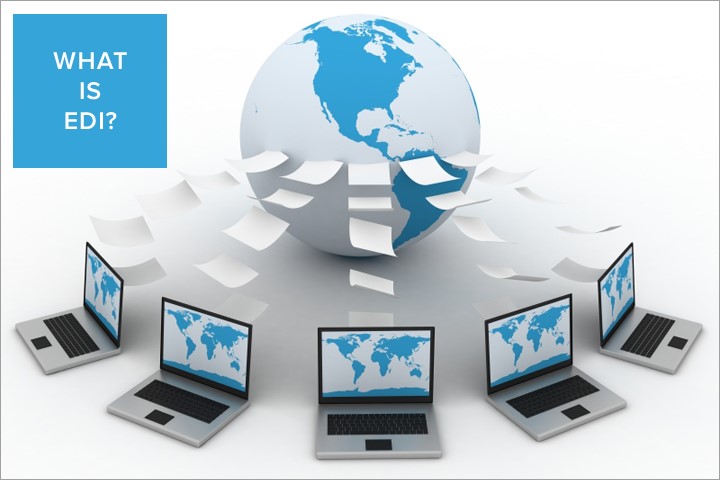In order to better understand EDI technology and ERP, we’re going to use the analogy of a computer. Starting with EDI, imagine it as a chat messenger on your computer. In the old days, this would have been something like AOL Instant Messenger. Today, you may imagine it as a tool like Skype. Either way, EDI is akin to a chat messenger that allows you to send messages to people on other computers.
The individual on the receiving end could be down the hall from you, or they could be halfway around the world on another continent. Regardless, you can use the chat messenger – EDI – to communicate without delay.
But you may ask, why is it necessary to have a chat platform when you can simply send emails and communicate in the same way? In other words, does an EDI solution add anything to a business that already has different ways to receive orders?
The answer here is “yes, it’s definitely beneficial.” When you receive an order via email or fax, you have to manually key that information into your various systems and accounting software. However, when you have an EDI solution in place, suddenly your system can read these orders and convert them without the need for manual intervention or delays.
This is just one example of the value of EDI.
Benefits of Integrating EDI and ERP
“ERP works to manage internal and external resources of an organization, helping enhance communication and decision making by consolidating business process and operations,” wiseGEEK explains. “ERP and EDI work together to make programs more efficient by adding potential communication facility and supply chain management technologies to businesses.”
When these two systems are synced, you’re able to enjoy a long list of benefits that stem from improved supply chain visibility. For example, you can process orders much faster, reduce the overall lead time, and streamline the order-to-cash cycle. You’ll also find it possible to onboard additional EDI-enabled clients.
Ultimately, these new capabilities drive more efficient processes. This leads to enhanced customer service and happier customers. In turn, you enjoy higher revenues, more loyal customers, and a stronger, more sustainable business model.
From an internal perspective, properly aligned EDI and ERP automate time consuming (and frustrating) processes that once required manual labor. This reduces the amount of wasted man-hours, boosts productivity in all areas of order fulfillment, and nearly eliminates data errors and mistakes.
Another benefit that isn’t discussed as much as it should be is the impact integrated EDI and ERP have on an organization’s paper trail. When these two technologies work together, you eliminate many of the paper-based activities that previously existed. This leads to greener business practices and the potential for reduced costs.
Integration: The Choice is Yours
While the benefits and advantages are clear, you don’t have to integrate the two together. While combining the various features allows you to maximize your resources, this isn’t mandatory.
As wiseGEEK notes, “Although ERP and EDI systems can work together to integrate all members of a business to the same communication and database system, EDI does not require ERP. EDI can run simply with a computer and access to the Internet.”
If you’re uncomfortable combining these two solutions, you can run them independently for a while and reevaluate your options down the road.
Putting it All Together
In order to remain competitive in 2016 and beyond, it’s imperative that organizations understand the various technologies that exist and make calculated decisions regarding which solutions they need to adopt. While it’s technically possible to survive without EDI and ERP, you’re missing out on numerous opportunities for growing revenues and increasing profit if you continue to ignore them.
Make the right choice!
Ready for a specialized food ERP? Learn more about Aptean Food & Beverage ERP JustFood Edition — a solution purpose-built to solve your challenges and propel your food business and digital transformation to the next level.
